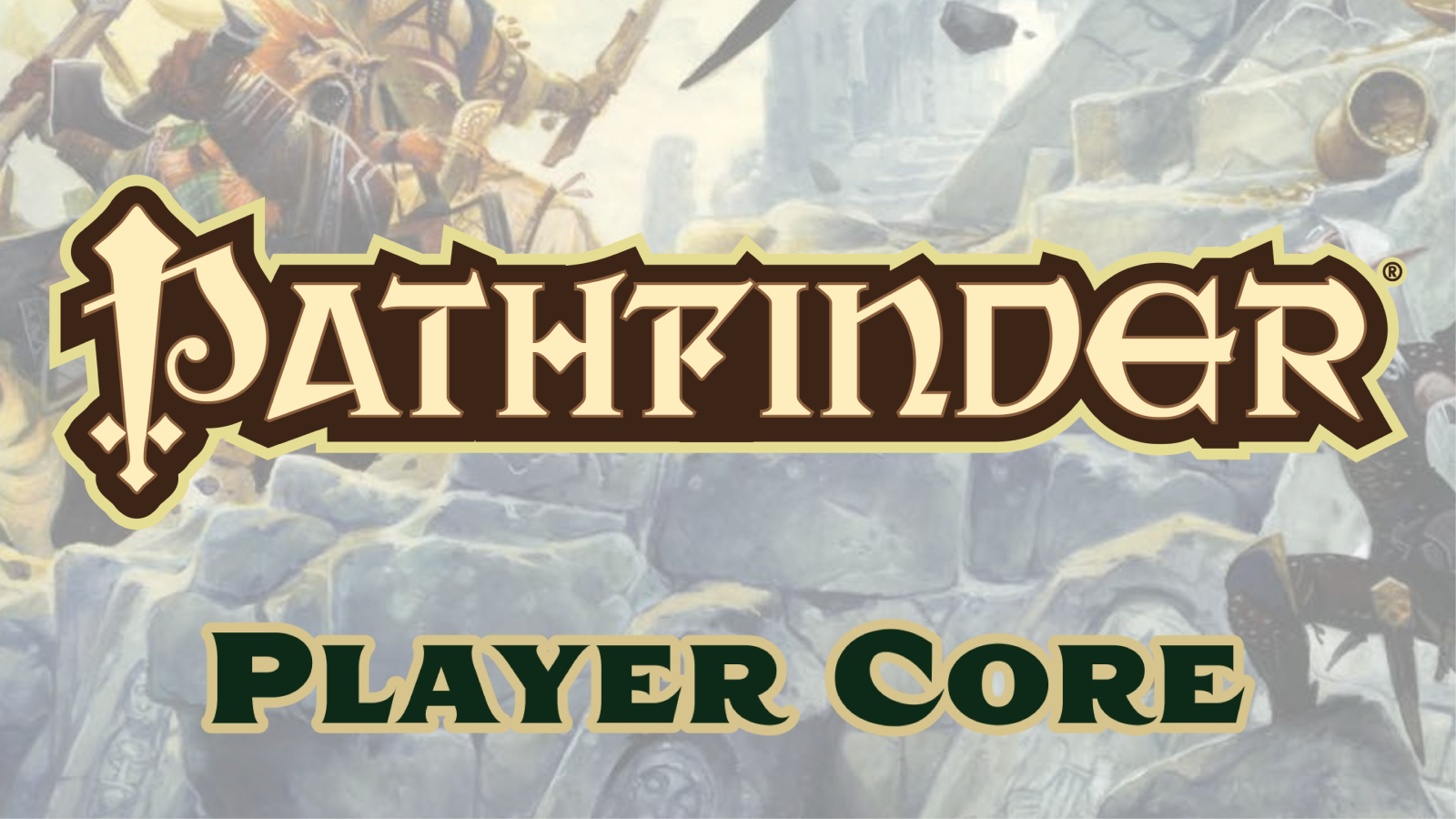
When my late friend, Brian Fitzpatrick – self-proclaimed nerd and all around great guy – invited me to play a role-playing game set in a system that he had created, I had no idea what I was getting myself into. Through nights over zoom during the pandemic, something awakened within me and after multiple adventures I knew I was hooked. When Brian tragically passed, I knew that I owed him alot for opening my eyes to a new way of gaming. About a year ago, a new group of mine decided we needed a change and someone suggested Pathfinder. Ever since, we have been adventuring using the 2nd Edition rules and we were excited to jump into the version presented in the brand new Pathfinder 2E Remaster: Player Core and GM Core, reviewed here.

As stated in the GM Core review, the remaster is really 2nd edition 2.5 rather than a brand new edition. As the world of role-playing games has evolved, publisher Paizo has taken errata, or updates and changes to rules, released since the 2nd edition release in 2019 and included some new content in the 2023 remaster. From the Paizo website:
“The new core rulebooks will also serve as a new foundation for our publishing partners, transitioning the game away from the Open Game License that caused so much controversy earlier this year to the more stable and reliable Open RPG Creative (ORC) license, which is currently being finalized with the help of hundreds of independent RPG publishers. This transition will result in a few minor modifications to the Pathfinder Second Edition system, notably the removal of alignment and a small number of nostalgic creatures, spells, and magic items exclusive to the OGL.”
Most of the changes in the remaster come in reworked versions of previous releases, while some things have been renamed, such as attributes from ability scores or certain spells and skills, others have been eliminated such as some monsters, the alignment system, and schools of magic. Much of this review will focus on the new product and what it offers, as is.
The Player Core is divided into 8 different sections that walks players through the basics of playing the game and creating the characters they will take into the world of Golarion and the Age of Lost Omens (or any other setting the players choose). The first section walks players through a general overview of the world of Pathfinder, including some lore around the lands and religions of Golarian, as well as rules for character creation and leveling up.
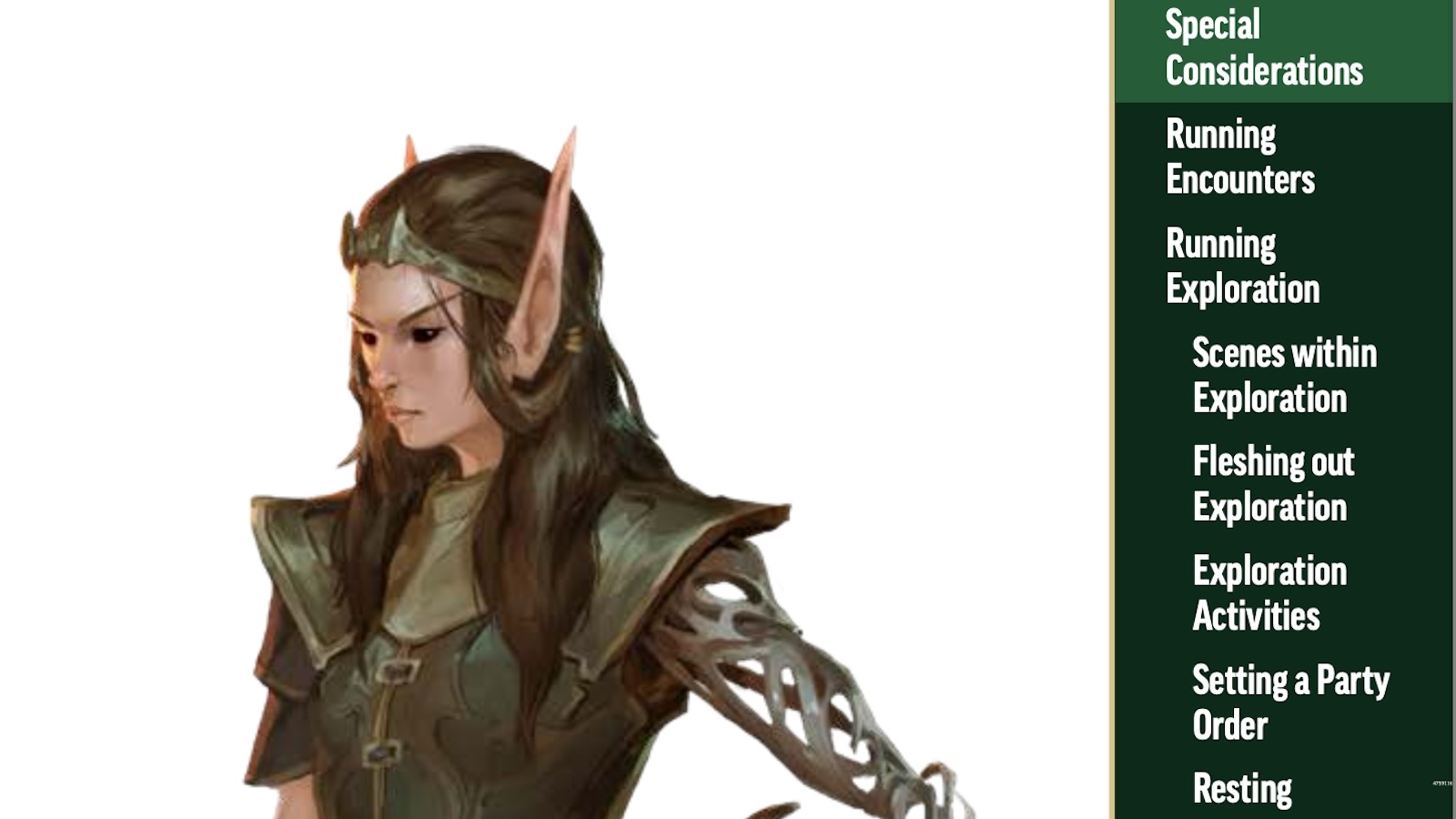
The next six sections are devoted to everything players need to create characters and deck them out with gear, spells, and special skills. As players navigate through the book they can use the sidebar to quickly locate the information they needed. The sidebar is divided into the 8 sections, plus a few other appendices and glossary items. Once you have flipped to the section needed, sublists appear underneath the section you are in with a highlight of the information on the current page’s information. Players can easily use this guide to flip through the over 400 pages with ease.
When creating a character, players first choose an ancestry. The Player Core provides updated rules for 8 different ancestries, with more available in other 2nd Edition materials and the upcoming Player Core 2. Each ancestry comes with descriptions of why a player might choose an ancestry, how they might play, different heritages, and what feats they gain as the character levels up. For example, a dwarf might be a mighty craftsman with a forge heritage. Each ancestry will come with unique base stats that make them able to adapt to different situations. Players can also create characters of mixed ancestry that offers some unique feats as they advance. Players can also choose a unique background that give them skills and attribute boosts, as well as fun choices to use in their roleplaying. For example, a gambler’s background boosts dexterity or charisma and gets trained in deception.

The Player Core also outlines 8 of Pathfinder’s classes:
- Bard
- Cleric
- Druid
- Fighter
- Ranger
- Rogue
- Witch
- Wizards
Much like an ancestry, each class provides the basics for character building, as well as an initial guide to how players may enact the personality of their created character. Each class explains the unique features of playing the character from spell charts outlining how many cantrips or spell slots a character has, to special considerations, such as choosing a muse for a Bard. As a character advances levels, new feats unique to each class and each is outlined with prerequisites and descriptions of how the feat enhances the character. As players level up, they may have ideas from other classes they would like to bring into their character build. Pathfinder outlines multiclassing rules in the way of archetypes, allowing characters to take feats from an amended list of abilities. Outlines for animal companions and familiars are described in much the same detail.
Skills, feats, equipment, and spells are outlined in the middle of the books and are varied and vast. The build of the character and how they level up dictates what things in these sections they player can access. Training in an attribute may limit what skills a character can perform. The level and focus of training will limit the access to different cantrips and spells. Items may or may not be used based on how proficient a character is in one type of weaponry. The fun of the game comes in creating a character that it grows with the decisions you make in the world you interact with and how that character levels up.

Chapter 8 outlines the rules of the game and is where the player core discusses how your character interacts with the world around them. Players usually alternate between exploration mode, which is less structured, and encounter mode, when combat or other stressful situations arise. As characters interact with the world, they will perform checks using different attributes. Players will roll a D20, add the attribute modifier, add bonus and/or subtract penalties, and then compare to Difficulty Classes or Armor Classes, depending on the encounter. Players can fail or succeed depending on their rolls, sometimes critically which adds special bonuses to the success or failure.
During encounters, players will roll for initiative and be placed in an action order. What makes Pathfinder unique, is that in each character’s turn, they will get three actions to spend. This allows characters to lean into their builds to interact with the non-player characters in unique ways. A fighter may be able to get in an attack for one action, move away from an enemy on the second, and switch out their weapon for a third. While there are some enemies with attacks of opportunity, most of them do not provoke this, and act using the three-action system as well. With the versatility of this system, players can use exciting movements to gain advantage over an opponent through their interaction with their surroundings and working together to set up combos that make defeating enemies easier. Much of Chapter 8 goes into all the possibilities that come within combat.
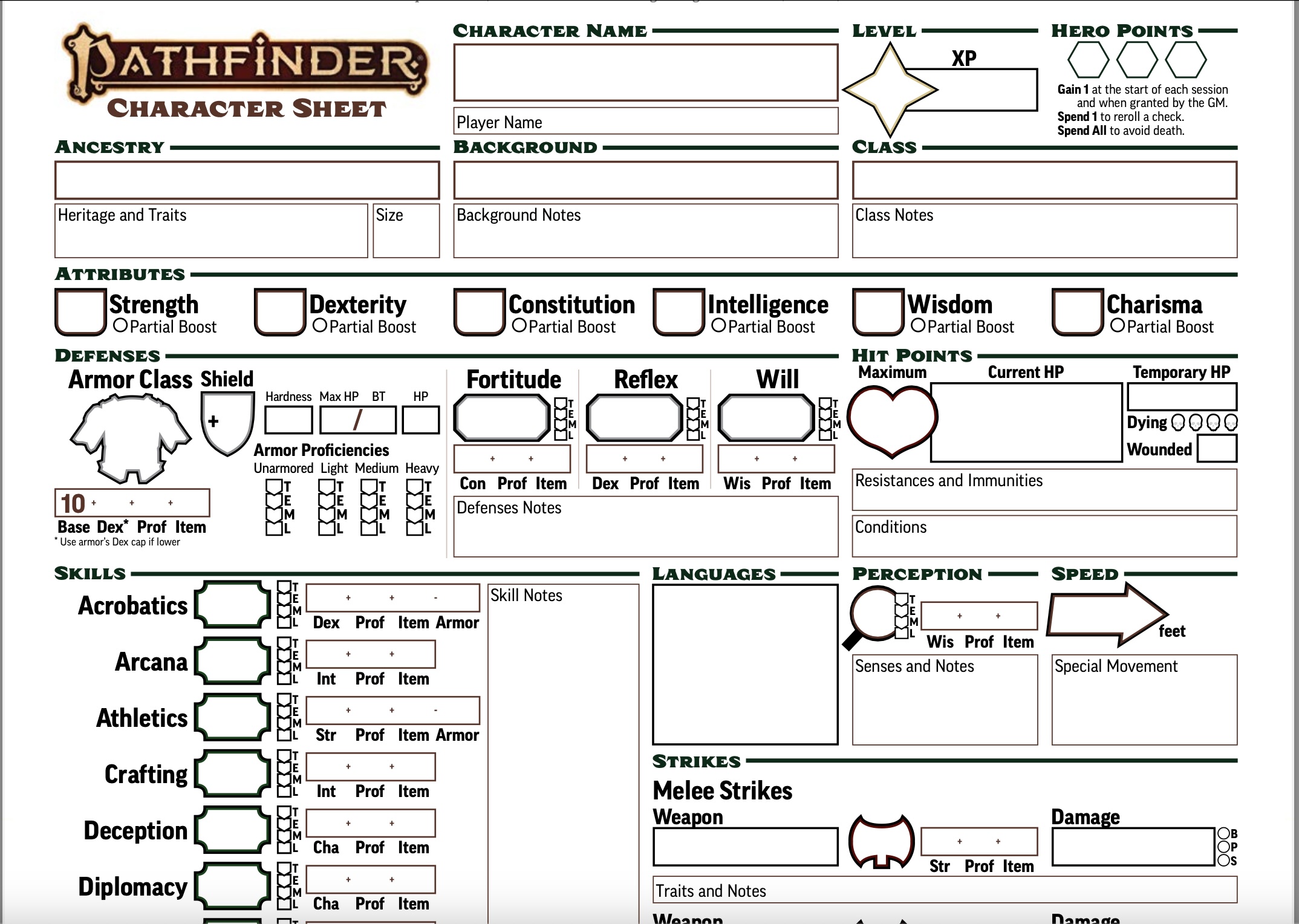
The final sections include a conditions appendix, a character sheet, and a glossary. Conditions can be earned in various encounters with objects, spells, creatures, and even the floor. These often give players boosts or afflictions until a certain trigger takes it away. The character sheet has been updated and is easier to use than the previous 2nd edition sheet. The sheet flows nicely with character creation and makes it easy to advance the characters as they level up. The glossary gives players a quick definition of certain terms and the page number to find more detailed information, even referring to the GM Core when information is presented there as well.
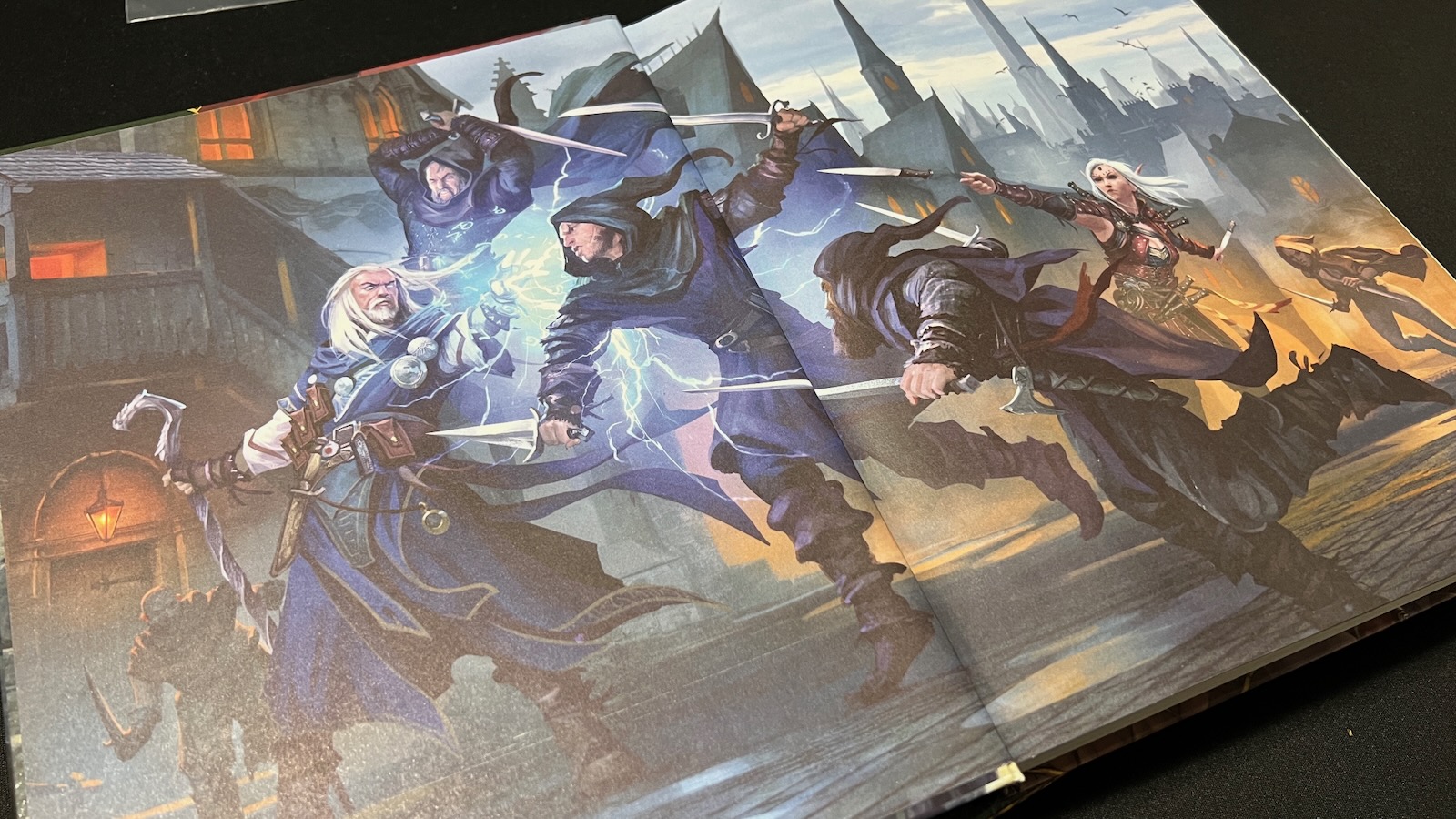
The Pathfinder: Player Core 2E Remaster is one of the most user friendly RPG manuals that I have found. The artwork found on the cover and throughout the book is inviting and whimsical at times yet intense and macabre in others. The artwork shows the kinds of creatures and situations the characters might find themselves encountering out in the world or even the character they might become down the road.
In character creation, while given a large bevy of choices, the process is straightforward and fun. Players can easily walk through each choice with a quick overview given at the beginning of sections before diving into the ones that interest them the most. The overviews give a great idea of how a character choice will affect play making selections much easier. The system also allows for creativity and cross-class amalgamations so players can create the characters they want. Who says an arctic elf wizard who happens to have a former life as a cook can’t join forces with a halfling druid who has a background as a field medic.
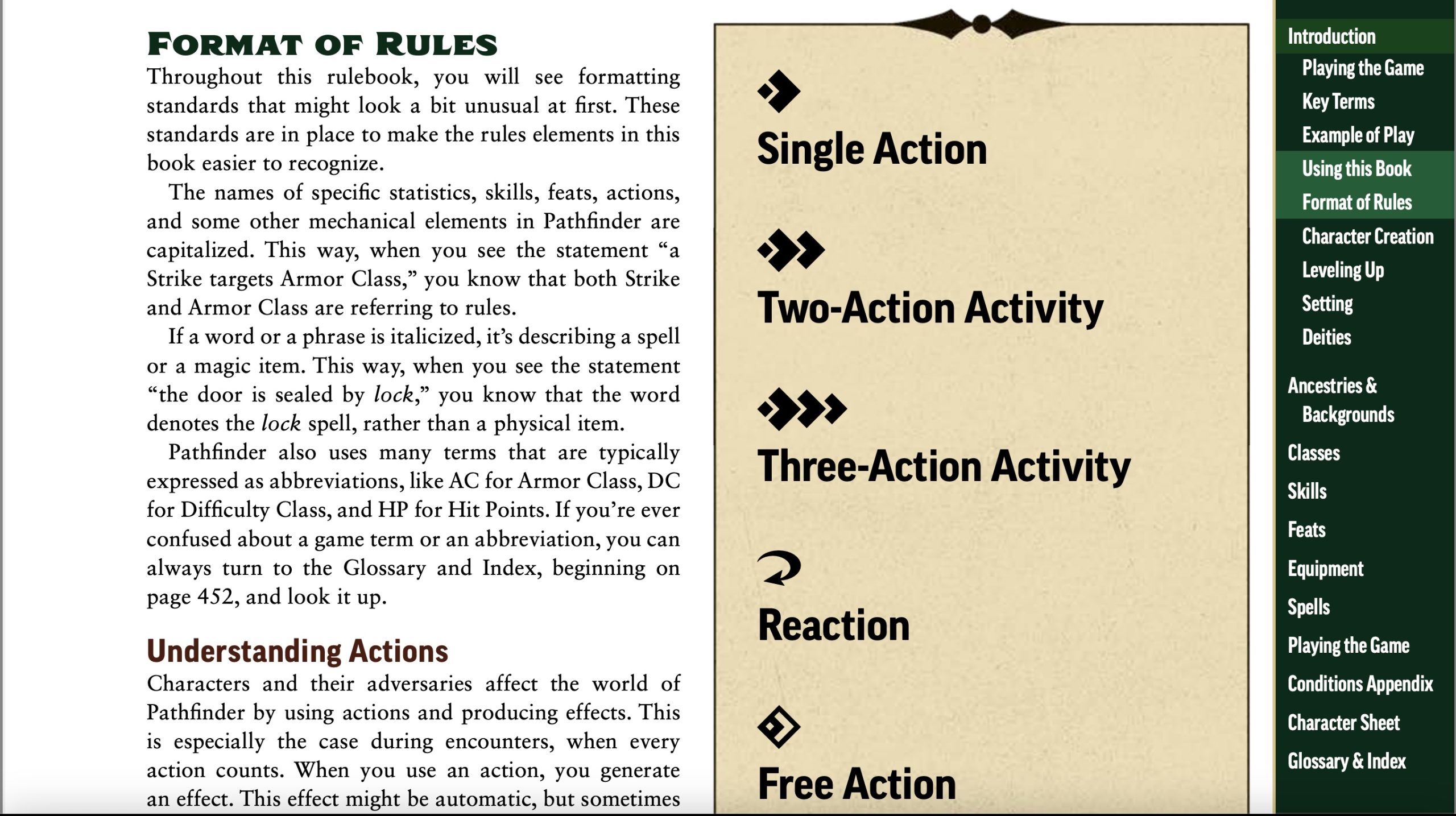
When playing a session of Pathfinder, as in the GM Core, the sidebar system allows players easy access to find the information they need. The three action system makes encounters that much more intense because players are invested in working as a team and finding all the exciting ways their characters can interact with the world the GM gives them. In the group I am currently playing with, we were able to easily adapt the Pathfinder system to another popular fantasy setting. Players in the group with experience of other RPG systems have also commented on how fun encounters are using the three action economy.
The only drawbacks I’ve found with the book are the lack of previously released classes and the need for errata. In the original Pathfinder 2E core book, other classes were introduced that were not included in the remaster Player Core, such as the Monk, Alchemist, and the Sorcerer. My current character is a dwarven monk and while other classes in my group have been updated, a couple of us are still waiting to see what, if any, changes are being made to our characters. We will have to wait until Player Core 2 is released for those changes. The other drawback is the need for errata, so early on after the release of the remaster. I know it’s a little nitpicky, but the point of the remaster was to fix some of the errata from the original 2E system. If those are the only things that I consider drawbacks, however, this book is doing just fine.
Pathfinder 2E Remaster: Player Core
Excellent
Pathfinder 2E Remaster Player Core has everything a player needs to start an adventure. The information is distilled down to what the player needs in any situation they face when playing the game. When paired with a GM using the GM Core as a guide, the group is equipped with the tools needed for an epic story. With hours invested in creating and learning this world, I would recommend this book to even the novice player looking to enter into this world.
Pros
- Easy to create a character with a wide variety of paths to choose from
- Easy to navigate and find the specific information a player needs
- Well designed action system for encounters within the game
Cons
- Missing classes from the original Pathfinder 2E core
- A few errata needed so soon after release
